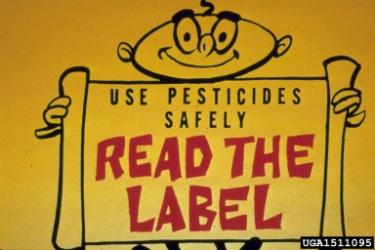Using Pesticides Properly
Once you’ve chosen the right product and, if needed, gotten the permit or license to use it, you’re ready to go. Following just a few simple best practices will keep you, your family and your forest safe when you do.
First and foremost, follow all label directions exactly. It’s the law. Use your pesticide at the lowest indicated rate that will still give you effective control. And remember “less can be more” so use the amount your label recommends to avoid unintended consequences.
Use the right equipment and method for applying your pesticide. This will depend on your label directions and your goals. It may mean treating small areas with a 25-gallon tank and a pump and wand, but putting a 10-foot boom on an ATV for larger treatments. If controlling unwanted tree populations, you may need to cut the trees and then apply the pesticide to the stump (the cut stump method), or cut into the tree’s bark to apply the pesticide (the frill girdle or “hack and squirt” method). Your goal should be to minimize waste and risk to desirable plants while maximizing effectiveness.
Protect yourself and others. When preparing and applying pesticides, wear appropriate gear: long-sleeved shirt, pants or overalls, socks and closed shoes, liquid-proof gloves, goggles and a mask or respirator as indicated by the product label. Only mix pesticides outdoors or in well-ventilated areas, and make sure children and pets are well away.
Mind the weather. Just as seasonal cycles and weather conditions affect pesticide choice, they also affect pesticide application. Apply your pesticide at the most effective time of year. For some herbicides, this will be in late summer or early fall, when plants are moving the energy they store in their stems and leaves down into their roots. Many pesticides are most effective above 60 degrees. The product label will indicate the optimal conditions so you can plan accordingly.
Check the rules. In some states, certain pesticides may be applied only by or under the direct supervision of specially trained and certified applicators. This happens only rarely, but if you're using a chemical that meets this criterion, contact your state department of agriculture or equivalent and they will put you in touch with a certified pesticide applicator.
And no matter which product you’re using, days with little or no wind are best. Drifting pesticide is wasted and can put other plants or animals at risk.
Give it time. You may not see the results of your pesticide application right away. In some cases, you may not see results until the next growing season. That doesn’t mean your efforts won’t pay off.
How can I get more tips?
It’s simple! Enter your email below.

